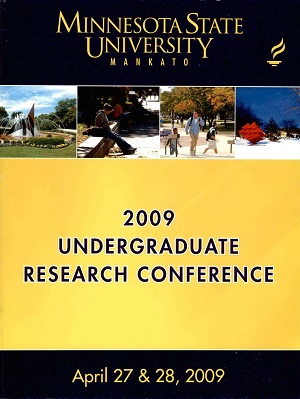Testing a New Cultural Priming Effect on Self Perception and Spatial Perception
Location
CSU 255
Start Date
28-4-2009 9:00 AM
End Date
28-4-2009 11:00 AM
Student's Major
Psychology
Student's College
Social and Behavioral Sciences
Mentor's Name
Vinai Norasakkunkit
Mentor's Department
Psychology
Mentor's College
Social and Behavioral Sciences
Description
Individuals from different cultural contexts develop different self-construals. Westerners tend to perceive themselves and objects in the world as autonomous entities separate and distinct from others and the environment. Consequently, they are likely to develop more analytic thought patterns. On the other hand, Easterners tend to perceive themselves in a relation to others and the environment, rather than being independent and distinct. Thus, they are likely to develop more holistic thought patterns. In order to experimentally manipulate cognitive frame switching between these modes of thoughts in the laboratory, cultural priming has been used in numerous studies. It allows one to temporarily activate the non-dominant thought patterns to examine its behavioral consequences. For example, Westerners can temporarily activate more holistic thought patterns, whereas Easterners can temporarily activate more analytic thought pattern. However, existing cultural priming methods do not have equal effectiveness for both Westerners and Easterners. The current study tested whether a newly developed priming method, which required both analytic and holistic modes of information processing, had equal efficacy cross-culturally in the frameswitching of both explicit (i.e., conscious) and implicit (i.e., unconscious) values, as well as in basic perceptual styles. The different groups of participants were examined: 1) Japanese participants in Japan, 2) American participants in the United States, and 3) Japanese biculturals in the United States to see if the new priming method was equally effective across all cultural groups.
Testing a New Cultural Priming Effect on Self Perception and Spatial Perception
CSU 255
Individuals from different cultural contexts develop different self-construals. Westerners tend to perceive themselves and objects in the world as autonomous entities separate and distinct from others and the environment. Consequently, they are likely to develop more analytic thought patterns. On the other hand, Easterners tend to perceive themselves in a relation to others and the environment, rather than being independent and distinct. Thus, they are likely to develop more holistic thought patterns. In order to experimentally manipulate cognitive frame switching between these modes of thoughts in the laboratory, cultural priming has been used in numerous studies. It allows one to temporarily activate the non-dominant thought patterns to examine its behavioral consequences. For example, Westerners can temporarily activate more holistic thought patterns, whereas Easterners can temporarily activate more analytic thought pattern. However, existing cultural priming methods do not have equal effectiveness for both Westerners and Easterners. The current study tested whether a newly developed priming method, which required both analytic and holistic modes of information processing, had equal efficacy cross-culturally in the frameswitching of both explicit (i.e., conscious) and implicit (i.e., unconscious) values, as well as in basic perceptual styles. The different groups of participants were examined: 1) Japanese participants in Japan, 2) American participants in the United States, and 3) Japanese biculturals in the United States to see if the new priming method was equally effective across all cultural groups.
Recommended Citation
Fjuikata, Miwako. "Testing a New Cultural Priming Effect on Self Perception and Spatial Perception." Undergraduate Research Symposium, Mankato, MN, April 28, 2009.
https://cornerstone.lib.mnsu.edu/urs/2009/oral-session-11/2




